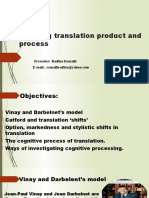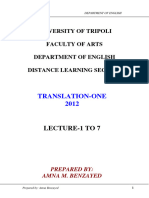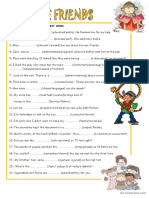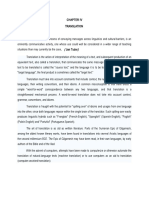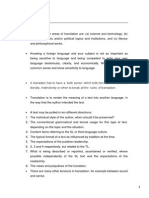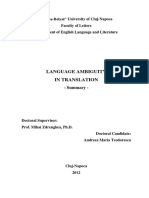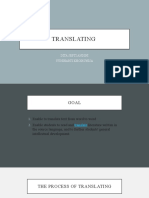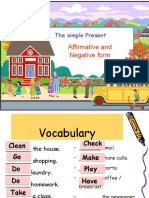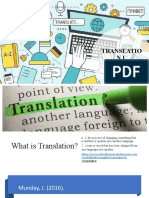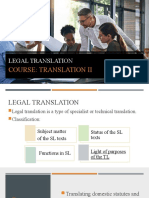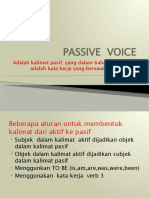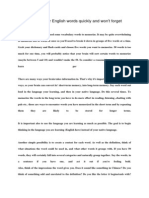100% found this document useful (1 vote)
248 views24 pagesTranslation Theories: Professors: Marvin Hernández Milenia Reyes
The document discusses various techniques for oblique translation including transposition, modulation, equivalence, and adaptation. Transposition involves changing word classes while keeping the same meaning, such as noun to verb. Modulation changes the point of view or structure to convey the same idea idiomatically. Equivalence renders expressions using different stylistic methods, like idioms. Adaptation is used when a simple translation would not work culturally and involves changing elements like character or movie names.
Uploaded by
Milenia ReyesCopyright
© © All Rights Reserved
We take content rights seriously. If you suspect this is your content, claim it here.
Available Formats
Download as PPTX, PDF, TXT or read online on Scribd
100% found this document useful (1 vote)
248 views24 pagesTranslation Theories: Professors: Marvin Hernández Milenia Reyes
The document discusses various techniques for oblique translation including transposition, modulation, equivalence, and adaptation. Transposition involves changing word classes while keeping the same meaning, such as noun to verb. Modulation changes the point of view or structure to convey the same idea idiomatically. Equivalence renders expressions using different stylistic methods, like idioms. Adaptation is used when a simple translation would not work culturally and involves changing elements like character or movie names.
Uploaded by
Milenia ReyesCopyright
© © All Rights Reserved
We take content rights seriously. If you suspect this is your content, claim it here.
Available Formats
Download as PPTX, PDF, TXT or read online on Scribd
/ 24


















